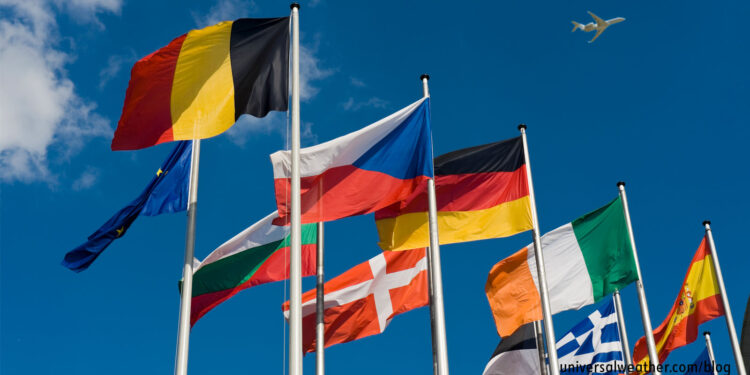Trip Planning Tips: Diplomatic Flights – Part 1: Tips & Considerations

This business aviation blog post is part of a series on diplomatic flights.
Permit, flight planning, and handling considerations for diplomatic flights differ from conventional private non-revenue and charter (non-scheduled commercial) operations. The planning process for diplomatic clearances involves country-to-country coordination, and there may be limitations on how involved your 3rd-party provider can be in this process. To avoid potential day of operation issues there are several tips and considerations to keep in mind.
The following is an overview of what you need to know:
1. Basic considerations
Diplomatic flights include both head of state flights and flights with passengers traveling on diplomatic clearances (DC). While these are normally operated as private flights there are cases where diplomatic flights may be charters. Head of state and diplomatic flights, typically, require more permits than standard private flights.
2. Permit lead times
While lead times vary worldwide, permits for diplomatic flights are often processed on short notice. Airport slots, parking and ground service arrangements are, in most cases, set up quickly for qualified diplomatic or head of state flights. In some cases, however, these flights may need to comply with official permit lead time guidelines.
3. Requesting diplomatic permits
These permits are normally obtained via diplomatic channels, and 3rd-party providers may have limited ability to get involved in the process. If a 3rd-party provider tries to request a permit for a diplomatic flight, they’ll likely be told that the process must go through diplomatic channels. There are, however, exceptions. Be aware that call signs are necessary for diplomatic permit requests if the flight will be using one. All permit requests must include both aircraft tail number and call sign (if using one), to ensure that the confirmation contains that information. If a call sign is used but not indicated on your appropriate permits, the flight plan will likely be denied.
4. Documentation
In many cases little advance documentation is needed for a flight operating on a diplomatic clearance. There are even cases where permits may not be required for these diplomatic movements. This, however, always needs to be confirmed in advance.
5. Flight planning
It’s important to ensure that your 3rd-party providers are given copies of all the permits that have been obtained, including copies of the hardcopy confirmations. This helps ensure that correct routings are used for flight plans and that required permit confirmations are placed in remarks section 18 of flight plans. It’s always important to check that the filed flight plan matches the route of flight indicated on the diplomatic permit.
6. APIS requirements
Diplomatic flights operating to the U.S. may not need to file Advance Passenger Information System (APIS) with complete information. These exceptions, however, only cover individuals who have U.S. diplomatic clearance. All others onboard, a child’s nanny for example, must provide full information in advance for APIS filing. In the case of Mexico, APIS must be filed for all diplomatic flights, but diplomatic passengers are not required to be listed. It’s recommended to check with your 3rd-party provider to determine any APIS requirements for your destination.
7. Ground handling
Even though permits may be obtained on short notice, via diplomatic channels, it’s always recommended to provide as much advance notification as possible to ensure parking and all required services upon arrival. Be sure the ground handler is aware of the diplomatic flight status. Diplomatic flights typically receive priority, in terms of handling and parking, and your ground handler must ensure that an appropriate number of ground agents are on hand to handle arrival/departure. Additionally, diplomatic flights are often permitted to have vehicles brought onto the ramp and up to the aircraft. Always be careful to verify that two different ground handlers have not been obtained. There are cases where both the embassy and the 3rd-party provider may have requested ground handling at a certain location. So, always let your 3rd-party provider know about any airport or handling services that may have been set up directly.
Conclusion
Be sure that all required permits are obtained, and noted on the flight plan, for flights operating under diplomatic clearances. Check on all applicable APIS reporting requirements. Let your ground handler know of the flight’s diplomatic status and any services needed upon arrival.
Later, we’ll discuss operational details for diplomatic flights.
Questions?
If you have any questions about this article or would like assistance planning your next diplomatic flight, contact me at earnestrocha@univ-wea.com.




